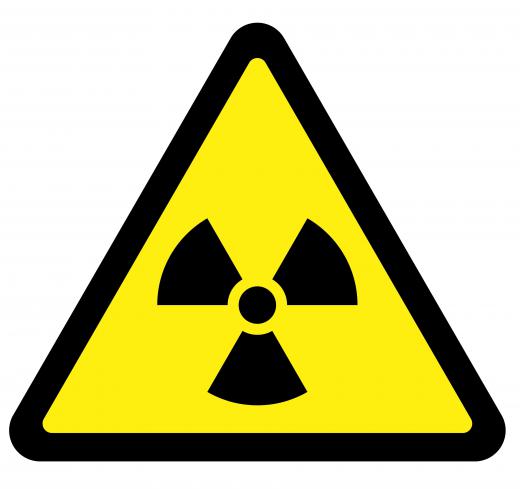What is a Half-Life?
 Niki Foster
Niki Foster
A half-life is the amount of time required for half of a given substance to decay. This measurement is applied to materials that experience exponential decay, meaning that the rate of decay is directly proportional to the amount of the substance, slowing down as the substance depletes. Half-life varies widely — it can be a few seconds or millions of years, depending upon the stability of the substance. The concept has applications throughout the world of science.
A given substance always has the same half-life until it reaches very small amounts, even though the rate of decay slows over time. Imagine an element has a half-life of five minutes, for example. If we start out with 20 ounces of it, five minutes later we will have 10 ounces remaining, and in another five minutes only 5 ounces remaining. The rate of decay has slowed from 2 ounces per minute to 1 ounce per minute, but the half-life is constant at five minutes.

Half-life is perhaps best known in the context of radioactivity. Radioactive "parent" elements transform into stable, or non-radioactive, "daughter" elements and emit radiation as they decay. Knowing the daughter element and half-life of a radioactive element, therefore, allows one to date a partially decayed sample by comparing the ratio of parent to daughter element. This method of dating is commonly used to determine the age of various entities in our universe, from fossils to meteorites. Carbon-14, a radioactive element present in living materials on Earth, begins decaying at the moment of death and can be used to date once-living materials such as bone and wood.
This measurement is also important in biology, where it indicates the amount of time in which half of a given substance is metabolized and/or eliminated by the body. In this sense, half-life is used in pharmacology to determine appropriate dosage amounts and intervals. It can also be applied in toxicology to determine the effects of toxins in the body over time.
AS FEATURED ON:
AS FEATURED ON:











Discussion Comments
there is no "other half." Once the "first half" as you say, has decayed, the "other half" will divide in half, and then that quarter will divide in half, etc. so the "other half" is not really a half at all.
why did we choose half life? why not full life. or t75? please explain.
I've been on dynacirc cr for about six months and haven't had any problems until now with irregular heartbeats. I went off the drug this morning and wondering how long before the drug clears my system.
It doesn't mean that only half of the substance decays. It means that a substance with a particular atomic weight, in course of time, gets reduced to half of the original atomic weight by emitting the radiations. that period is'half life'. --Manjunatha K.S
I found this site very useful. It has everything in detail. It's very good for every student like me.
Half-life is simply the rate of decay. Whether any given molecule decays or not is completely random.
if a half life of a substance is the time it takes half of it to decay...what determines which half decays and which half doesn't? Why would one half decay and not the other?
Post your comments